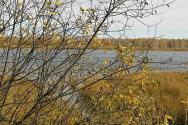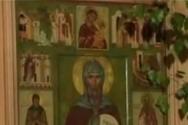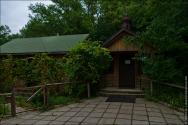Properties of living organisms (grade 5). Signs of living organisms What we learned
Hello again!
Congratulations on the beginning of the new school year! Fifth grade is a new step towards independence: new teachers, subjects, interests. More lessons means more homework. happy to help again.
We moved to 5th grade. One of the new lessons Biology! My son really liked the subject, he came home from school, gesticulated, explained, said - he couldn’t stop it. Business!)
And why did I look in the notebook?! I felt that happiness was deceptive. The title is highlighted and underlined, carefully written:
Biology - The science of living organisms!
So that! :))
Our first homework is to write down the characteristics of living organisms. I'm happy to publish it!
Basic characteristics of living organisms
- Breath
- Nutrition
- Movement
- Growth (increase in body size)
- Development (acquisition of new properties)
- Reproduction (reproduction of their own kind: acorn-oak, egg-chick)
- Aging and Dying
- Excretion (carry out metabolism: plants absorb carbon dioxide, release oxygen, animals - vice versa)
- Cellular structure (may consist of one or many cells, have organs)
- Irritability (response to changes in the environment: tree leaves falling, hibernation)
When we talk about the differences between living and non-living nature, it is useful to imagine a stone and a cat or a dog. There are differences, and they are obvious. How does science determine them?
TO especially-ben-but-ness of a living being she from-but-sits the following processes that are practically present to all living or-ga-niz-mothers: pi-ta-nie, breath-ha- tion, production, reproduction, mobility, irritability, adaptability, growth and development.
Without a doubt, a stone can be mobile if it is thrown, it can multiply if it is broken, it can even grow if it has Cree -has become such a nature and lives in a saturated salt solution (Fig. 1).
Rice. 1. Actions with stone
This requires external influence, while the stone is unlikely to begin to piss, irritate and sigh from such injustice . In the peculiarities of living and non-living things, they find the same properties of living things, which are no longer with anything re-pu-ta-eat. What are these properties?
1. In the organs and their cells the same chemical elements are contained as in the bodies of inanimate nature. But in the cells of living beings there is also or-ga-no-che-substances, which received such a name, because for the first time you were from living beings, from the or-ga-low- mov. These are proteins, fats, carbons and nuclei. These substances form strong structures (Fig. 2).
Rice. 2. DNA molecule
But only when in a cage do or-ga-no-substances provide manifestations of life. Moreover, the most important role in the life of the or-ga-niz-mov comes primarily from nuk-le-i-no- vym sour-lo-there and white-kam. They ensure the self-mo-re-gu-la-tion of all processes in the organization, its self-mo-re-pro-from-ve-de knowledge, and therefore life itself.
Let’s remember: proteins, fats, carbons and nucleic acids are the main components of life .
2. The main structural and functional unit almost all living orga-nis-movs appear cell. Almost, because on Earth the viruses, which represent a non-cellular form of life, feel great on Earth. In the or-ga-low-mah, in which there are many cells - many-cell-precise, from the cells tissues are formed, tissues are formed there are organs, which in turn unite in the system of organs (Fig. 3).

Rice. 3. Uniting cells into an organ system
Such tenacity of the structure and functions of the or-ga-nis-moves ensures stability and normal pro-te-te- ka-nie life.
3. Metabolism- this is the totality of all chemical reactions, all transformations of substances that enter into an organism from the external environment in the process of drinking and breathing. Bla-go-da-rya about-me-well-substances co-preserve-the-up-to-chen-ness of the processes of life-not-de-I-tel-but- sti-ness and integrity of the or-ga-niz-ma, the stability of the internal environment in the cell and in or-ga-niz-me in general. That is, the exchange of substances and energy ensures a permanent connection between the organism and the environment and the maintenance of its life (Fig. 4).

Rice. 4. Relationship between the body and the environment
4. Multiplication. The living always appears from the living. That’s why the question “What came first: the chicken or the egg?” for general biology neva-wives. In the end, the chicken still reproduces the chicken, and the man still reproduces the human ka. Therefore, life can be considered as the re-creation of similar creatures or the re-production of itself. tion (Fig. 5). And this is a very important property of life, which ensures the continuity of the existence of life.

Rice. 5. Reproduction
5. If you hit a stone, it does not respond and does not react in any way. This trick won’t work with a dog: the predator responds to aggression. Because living beings actively react to the effects of factors in the external environment, manifesting themselves in such a way -zom, irritability. It is the dis-turbability (Fig. 6) that allows the or-ga-niz-mam to ori-en-ti-ro-v-t-sya in the environment and , therefore, survive in the conditions I have created. Even plants that seem to lack movement can react to change nia. Many are able to grow leaves in the direction of a hundred suns in order to receive more light, and some, for example, For example, the leaves curl up if you touch them. This is also a manifestation of dis-ease.

Rice. 6. Irritability
6. Fitness. If you pay attention to the appearance of the zhi-ra-fa, you can see that he is ideally suited to the existence of nyu in the conditions of the African sa-van. A long neck helps him get food where no one can get it, long legs help him run quickly and fight off predators -ni-kov (Fig. 7).

Rice. 7. Giraffe Adaptability
But in Ark-ti-ka the giraffe cannot survive, but white honeys feel great there (Fig. 8).

Rice. 8. Polar bear adaptation
7. We can help sub-sab-be the or-ga-niz for many years, and that’s what it’s called evolution. Evolution is another important property of life.
8. Living or-ga-niz-we are from the same time, most often ne-ra-ti-mo. These are the things they call time.
Development, as a rule, is associated with growth, an increase in body weight or its size, associated -but with the appearance of new cells.
Evolution is also development, but not of one particular orga-niz-ma, but of the entire living world as a whole. Development usually goes from simple to complex and to greater adaptability of the organism to the living environment. nia. This ensures that many living beings that we can observe today.
We examined the differences between living and nonliving nature, and became familiar with the general properties of living organisms. Next time we'll talk about the many types of living beings on our planet and the levels of organiza- tions below -tions of life.
Bibliography
- Pasechnik V.V. Biology. Bacteria, fungi, plants. 6th grade - M.: Bustard, 2011 - 304 p.
- Bakhchieva O.A., Klyuchnikova N.M., Pyatunina S.K. and others. Natural history 5. - M.: Educational literature, 2012
- Eskov K.Yu. and others. Natural History 5, ed. Vakhrusheva A.A. - M.: Balass, 2013
- Pleshakov A.A., Sonin N.I. Biology. Introduction to biology. 5 grades - M.: Bustard, 2013.
- Internet portal “Tepka.ru” ()
- Internet portal “Uchitelbiologii.ru” ()
- Internet portal “Tepka.ru” ()
Homework
- What processes are inherent in all living organisms?
- What is metabolism and what does it contribute to?
- What is the relationship between development and evolution?
The earth is inhabited by diverse living creatures that are not similar to each other. Despite their different structure and special way of life, they are united by the properties of living organisms. These properties distinguish living matter (all living creatures on the planet) from inanimate nature (mountains, rivers, stones).
Properties
The differences between living nature and inanimate matter are described in detail in the table of properties of a living organism.
|
Sign |
Description |
|
Cellular structure |
Living things are made up of cells - the “building blocks of life”. This is the unit of all living things. Life is impossible outside a cell |
|
The energy necessary to maintain life is extracted from food. Plants are autotrophs and use sunlight, carbon dioxide, and water with minerals as food. The process of creating nutrients inside the body using light is called photosynthesis. The rest of the creatures feed on ready-made substances, i.e. eat other creatures and are called heterotrophs |
|
|
Metabolism |
The scientific name is metabolism. This is the process of extracting useful, nutritious, vital substances from food coming from the external environment. Complex substances break down into simpler ones, from which each cell forms the substances necessary for the body, and also extracts energy and heat. |
|
It is part of metabolism. Organisms absorb oxygen from the air and release carbon dioxide. Oxygen oxidizes, i.e. combines with other substances and participates in complex biochemical reactions |
|
|
Organisms are constantly growing. In multicellular organisms this occurs due to cell division |
|
|
Irritability |
The ability to respond to manifestations of the external environment. For example, flowers close when there is a lack of sunlight, and a person withdraws his hand when it comes into contact with a hot object |
|
Reproduction |
Organisms reproduce creatures similar to themselves. This is a complex process that can occur in different ways depending on the complexity of the organization of the body. For example, single-celled creatures divide, plants reproduce by seeds or parts of the body, for the reproduction of mammals two individuals are needed - male and female |
|
This natural process is the logical conclusion of life. All living beings, regardless of life expectancy, die and decompose, giving food to other organisms |

Rice. 1. Cellular structure of organisms.
Living organisms do not live separately from inanimate nature, but actively interact with it. Water and oxygen are nonliving matter, but they are vital substances for living organisms. The interaction of living and nonliving nature through metabolism is called the cycle of substances.
Biological diversity
The general properties of living things are inherent in both unicellular organisms, consisting of just one cell, and complexly organized animals, such as humans. All biological diversity for easy study divided into five kingdoms:
- viruses;
- bacteria;
- plants;
- mushrooms;
- animals.

Rice. 2. Kingdoms of living nature.
Many scientists attribute viruses to inanimate nature. They are on the border of the transition of substances into living form and have the properties of living and nonliving matter. For example, they are capable of reproduction, but do not grow or feed.
Bacteria differ from other single-celled organisms (plants and animals) by the absence of a nucleus, the part of the cell in which hereditary information is stored. Such primitive organisms reproduce by division and have all the signs of life.
TOP 4 articleswho are reading along with this
Plants, fungi and animals are eukaryotes. Their cells have a formed nucleus. Plants differ from fungi in the presence of leaves and the ability to photosynthesize. Mushrooms are not animals, because... They have a special structure and are not capable of active movement.
The animal kingdom is very vast and covers many creatures from single-celled protozoa (amoeba) to mammals (elephant, cat, squirrel), which includes humans.

Rice. 3. Diversity of animals.
All living organisms have the same chemical composition, because... consist of the same elements. Carbon, oxygen, nitrogen, and hydrogen are important for life.
What have we learned?
From the 5th grade biology lesson we learned about the basic properties of living matter, as well as the diversity of life on Earth. The main signs of living things are reproduction, respiration, nutrition, growth. The basis of all living beings is the cell. The entire diversity of living nature is represented by five kingdoms - viruses, bacteria, plants, fungi, animals. Viruses are a transitional form from nonliving to living matter.
Test on the topic
Evaluation of the report
Average rating: 4.8. Total ratings received: 1979.
Basic terms and concepts tested in the examination paper: homeostasis, unity of living and inanimate nature, variability, heredity, metabolism.
– cellular structure . All organisms existing on Earth are made up of cells. The exception is viruses, which exhibit living properties only in other organisms.
Metabolism – a set of biochemical transformations occurring in the body and other biosystems.
Self-regulation – maintaining a constant internal environment of the body (homeostasis). Persistent disruption of homeostasis leads to the death of the organism.
Irritability – the body’s ability to respond to external and internal stimuli (reflexes in animals and tropisms, taxis and nasties in plants).
Variability – the ability of organisms to acquire new characteristics and properties as a result of the influence of the external environment and changes in the hereditary apparatus – DNA molecules.
Heredity – the ability of an organism to transmit its characteristics from generation to generation.
Reproduction or self-reproduction – the ability of living systems to reproduce their own kind. Reproduction is based on the process of doubling DNA molecules followed by cell division.
Growth and development – all organisms grow during their lives; Development is understood as both the individual development of an organism and the historical development of living nature.
System openness – a property of all living systems associated with the constant supply of energy from the outside and the removal of waste products. In other words, the organism is alive as long as it exchanges substances and energy with the environment.
Ability to adapt – in the process of historical development and under the influence of natural selection, organisms acquire adaptations to environmental conditions (adaptation). Organisms that do not have the necessary adaptations die out.
Generality of chemical composition . The main features of the chemical composition of a cell and a multicellular organism are carbon compounds - proteins, fats, carbohydrates, nucleic acids. These compounds are not formed in inanimate nature.
The commonality of the chemical composition of living systems and inanimate nature speaks of the unity and connection of living and inanimate matter. The whole world is a system based on individual atoms. Atoms interact with each other to form molecules. Rock crystals, stars, planets, and the universe are formed from molecules in nonliving systems. From the molecules that make up organisms, living systems are formed - cells, tissues, organisms. The interrelation of living and nonliving systems is clearly manifested at the level of biogeocenoses and the biosphere.
Main levels of organization of living nature: cellular, organismal, population-species, biogeocenotic
Basic terms and concepts tested in exam papers: standard of living, biological systems studied at this level, molecular genetic, cellular, organismal, population-species, biogeocenotic, biosphere.
Levels of organization living systems reflect the subordination and hierarchy of the structural organization of life. Levels of life differ from each other in the complexity of the organization of the system. A cell is simpler compared to a multicellular organism or population.
The standard of living is the form and method of its existence. For example, a virus exists in the form of a DNA or RNA molecule enclosed in a protein shell. This is the form of existence of the virus. However, the virus exhibits the properties of a living system only when it enters the cell of another organism. There it reproduces. This is his way of existence.
Molecular genetic level represented by individual biopolymers (DNA, RNA, proteins, lipids, carbohydrates and other compounds); At this level of life, phenomena related to changes (mutations) and reproduction of genetic material and metabolism are studied.
Cellular - the level at which life exists in the form of a cell - the structural and functional unit of life. At this level, processes such as metabolism and energy, information exchange, reproduction, photosynthesis, nerve impulse transmission and many others are studied.
Organismal - this is the independent existence of an individual - a unicellular or multicellular organism.
Population-species – level, which is represented by a group of individuals of the same species – a population; It is in the population that elementary evolutionary processes take place - the accumulation, manifestation and selection of mutations.
Biogeocenotic – represented by ecosystems consisting of different populations and their habitats.
Biosphere – a level representing the totality of all biogeocenoses. In the biosphere there is a circulation of substances and the transformation of energy with the participation of organisms. The waste products of organisms participate in the process of evolution of the Earth.
EXAMPLES OF TASKS
Part A
A1. The level at which the processes of biogenic migration of atoms are studied is called:
1) biogeocenotic
2) biosphere
3) population-species
4) molecular genetic
A2. At the population-species level we study:
1) gene mutations
2) relationships between organisms of the same species
3) organ systems
4) metabolic processes in the body
A3. Maintaining relative constancy of the chemical composition of the body is called
1) metabolism 3) homeostasis
2) assimilation 4) adaptation
A4. The occurrence of mutations is associated with such properties of the organism as
1) heredity 3) irritability
2) variability 4) self-reproduction
A5. Which of the following biological systems forms the highest standard of living?
1) amoeba cell 3) herd of deer
2) smallpox virus 4) nature reserve
A6. Pulling your hand away from a hot object is an example.







